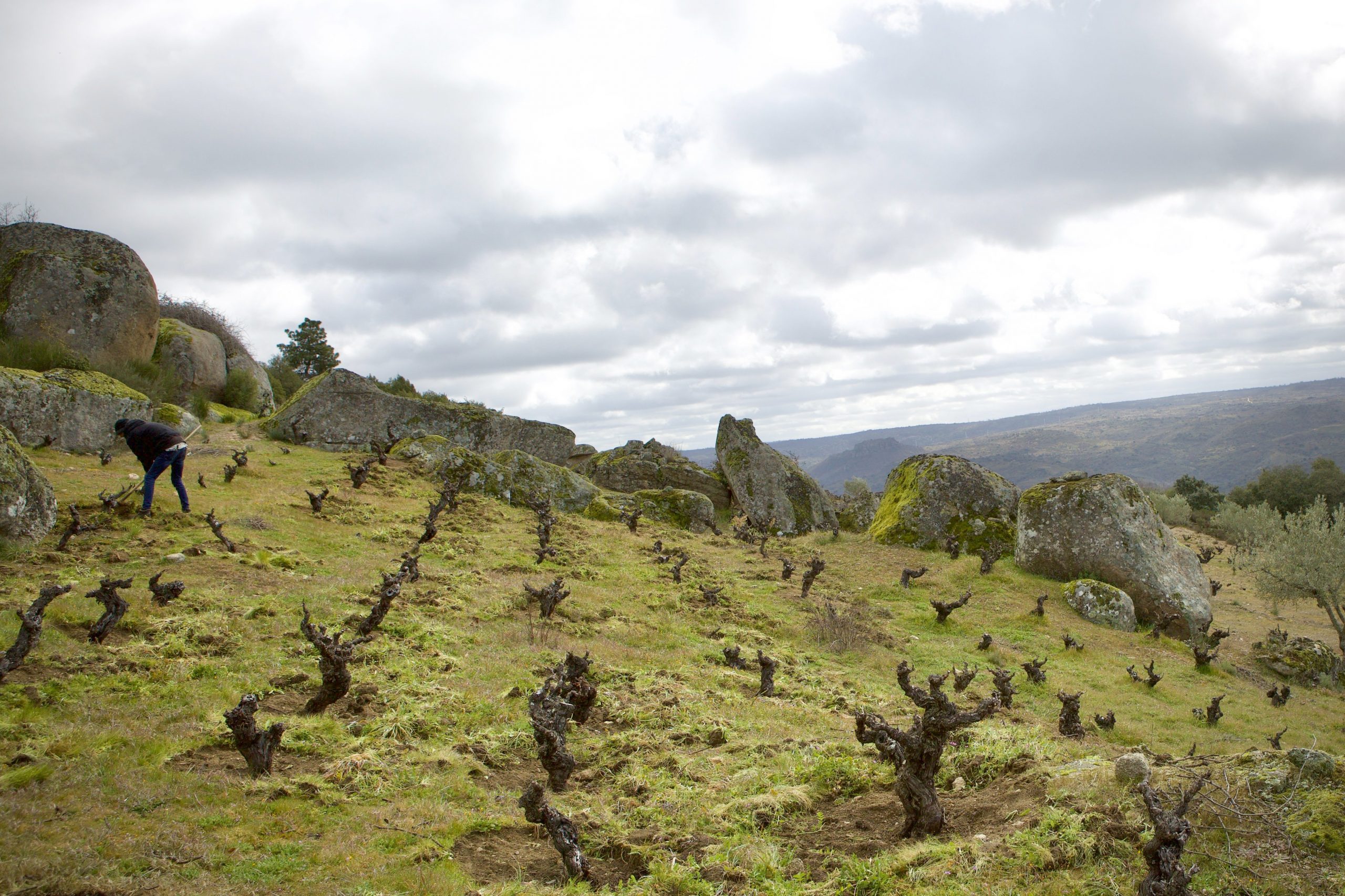
An article in the February 28th issue of The New Yorker magazine titled, “It’s O.K. to Be Confused About This Economy,” hit close to home. January left us nervous and the tension was compounded by all the projections of recession by the experts, but then business boomed in February. Confusing indeed. It seems the unusually heavy rains kept people home instead of in restaurants in early January. We’re grateful for our February, and March is already off to a roar. If it’s going well for us again, hopefully that’s an indicator for you as well.
After an absence of almost a year and a half from the States, I flew from Barcelona to Los Angeles on January 12th and landed in sunny weather to find unusually green hillsides after the big rains. My trip was exhausting and the five weeks I was there felt like they went way too quickly. Our company put on a three-day staff meeting followed by some very well-attended tasting events in SF, LA, SD, and Monterey, which allowed me some face-time (albeit brief) with many of our customers and friends. By the time I arrived back in Barcelona—direct flights are now available from LA and SF through Level, by the way—followed by a couple of days’ drive back home to Portugal with an unusually snowy stop in Rioja, I was toast.
When people find out I’m involved in wine importation they mostly think the job is all just the pleasure and fun of sipping and feasting. This is indeed a part of it, but that’s not how it always goes. When traveling alone I don’t eat breakfast and sometimes skip lunch, too, and often freeze to the bone in cellar and vineyard visits during cold seasons while the vines are dormant (the best times to visit, unfortunately, are when the weather’s not particularly nice). One Brit in the same line of work summed it up to me perfectly in 2010 at one of Beaune’s infamous restaurants, Ma Cuisine, “It’s good work, but it’s hard work.” In 2010 I was two years into my first wine company (Vance Erickson), and at thirty-three years old I was energized straight off the plane, a fearless consumer of daily foie gras and sometimes two or three pain au chocolat a day while in France for four to six weeks, fuel that fired me up to hit the road. At forty-six, it’s a stumble off the transatlantic flight in full zombie mode, pinched neck, sagging shoulders and desperate, bloodshot eyes, challenges of my life choices and addiction to all things wine, feeling old—prematurely old. Then, after one good and long day of sleep exactly ten days after being home, I’m ready to destroy myself again. My wife doesn’t understand it, and neither do I.
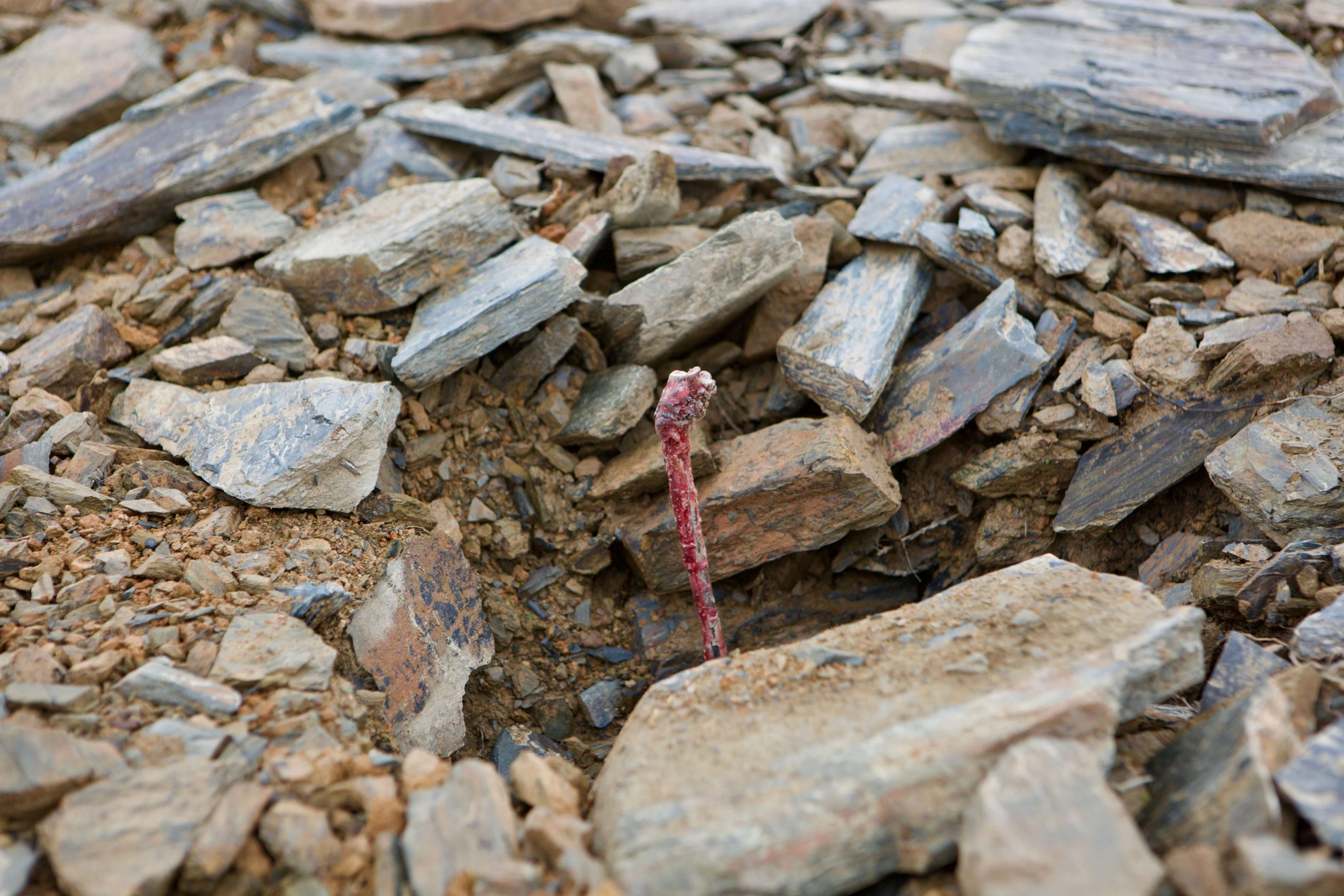
There is no wine area quite like northwest Iberia. Last week I saw almost all our Galician and Portuguese crew during a four-day bender, and along for the ride was Gino Della Porto, winegrower and co-owner of Sette, in Nizza Monferrato. Here, everyone we work with started their own project from the ground floor, most of whom are like cultural search-and-rescue teams for generations of lost knowledge. They’re often from poor families that support their wine dreams the best they can, working against unfavorable winegrowing conditions every year, lots of hail, and mildew pressure like no other large European wine zone I know. Our guys at Cume do Avia have never had a normal crop load. The best I’ve ever heard was just last season, which was down only 10% from their potential output, when it’s usually reduced by 60-70%; they’re organic farmers in a fungal paradise—conditions inhospitable to grapes. While their neighbors who are not organic have canopies exploding with fruit, they live the ideological dream (nightmares being dreams, too) of the Galician winegrower committed to organic farming as their neighbors chuckle all the way to the bank. Prior to 2022, Diego said that with mildew’s three-peat victory from 2019-2021, they considered putting a stop to organic farming, which they’ve practiced since the very beginning of their project. 2022 has renewed their vow and confidence, and I’m proud of them for weathering the often grueling first decade and half since they started.
Spending time with these guys from this part of the world I now call home gives me a reality check on what true exhaustion and stress looks like. Their relentlessness inspires me to reinforce my resolve to do better, not for me, but for them…wait, yes, seeing them succeed is for me, too—I need it, I crave it… I live for this interaction and for the opportunity to make a difference for them and their livelihood. Here, in Northwestern Iberia, all the clichés of humility—shirt off their back, salt of the earth, heart of gold—fit better than any other large winegrowing region I’ve experienced. The Galicians and Portuguese recharge my battery, narrow my focus, remind me of all the gifts that fill my life, while bringing more depth to our work than the squabbling over prices and payment terms, and the utterances of “what have you done for me lately?” all too commonly experienced at well-known wineries run by fortunate offspring in historically important areas—regions that have now become more of an industrial commodity than something inspiring. Here, a sense of entitlement rarely exists, only gratitude for any contribution to their business. I’m refueled now, maybe not physically but at least emotionally, and ready for 2023!
I’m off to Piemonte at the end of this month to visit with a few of our new growers. It’s a research trip to collect stories, technical details, photographs, and drone images for three of our newest additions, and to say hello and taste new and upcoming releases out of tank and bottle from our old friends. The three new additions will redefine the direction of our Italian portfolio, giving us a clearer stamp in the land of Nebbiolo. Two of them will one day be very important Barolo estates (it’s hard to believe, but we’ve added two not only new but exciting Barolo producers in the same moment!), and one is a small cantina with lofty goals from an ambitious young grower in the far eastern section of Caluso. All are under thirty, which makes them particularly special for us, and you’ll see just how special they are when their wines are in your glass. Names and details will be revealed next month!
Itata, Chile
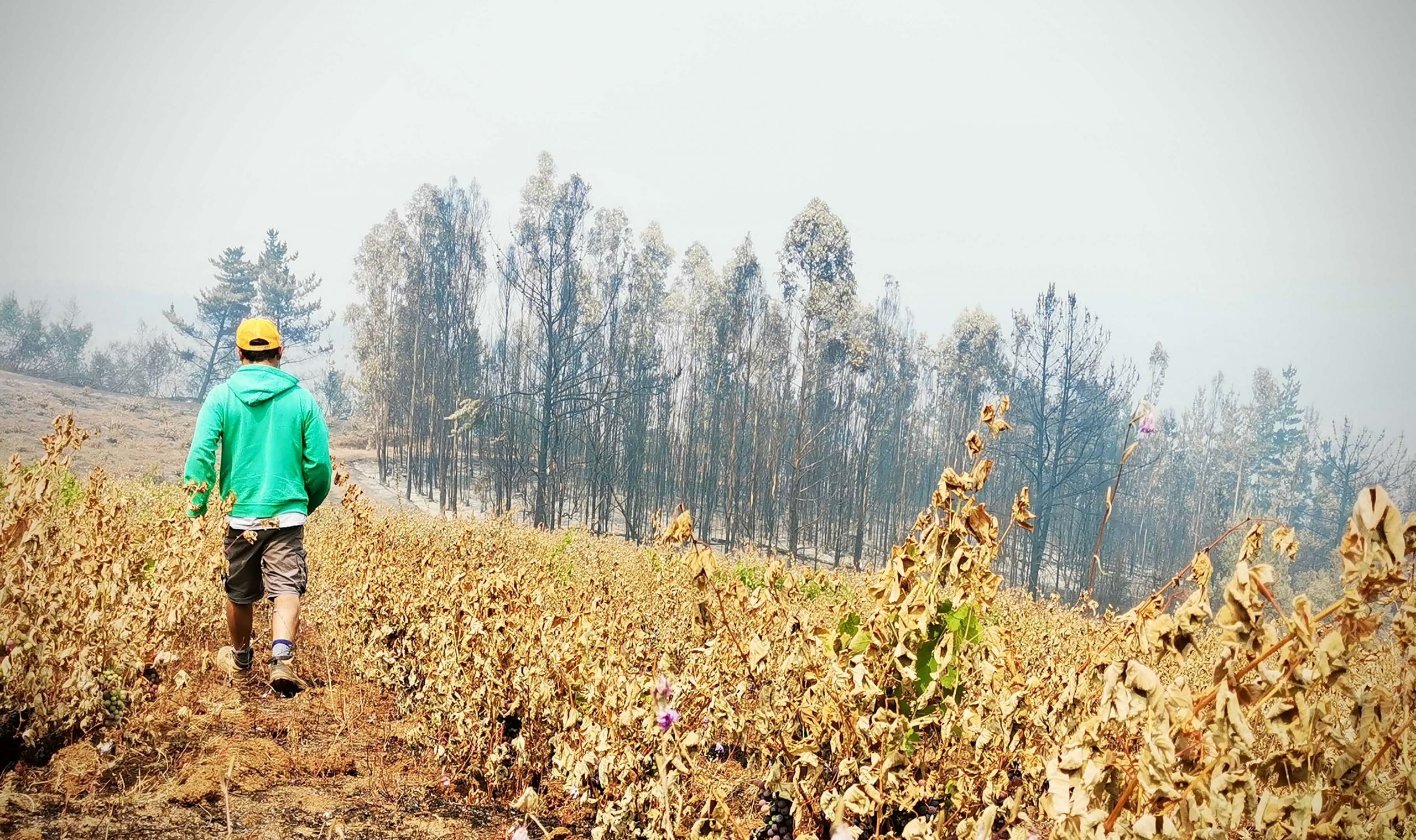
While California was green and refreshing in January, Chile burned. I’ve spent a lot of summer months there because my wife is Chilean, so I’m familiar with the summer fires and the smoke. It’s exactly like California with its arid climate and devastating earthquakes and seasonal flames. Though it’s a quarter of the way around the world, this particular fire hit close to home for a lot of us who work with growers down in Itata.
I spoke to both Leo Erazo, from Viñateros Bravos and his eponymous label, and a friend we once worked with, Pedro Parra, after Leigh Readey, our Santa Barbara neo-hippie, beach and farm girl, Source representative and social media dabbler, gave us a report on the situation. Pedro said that the wind was favorable for him and blew the fire in the opposite direction of his vineyards. Leo’s vineyards, however, were right in its path and were devastated, all but about 10% of the vines.
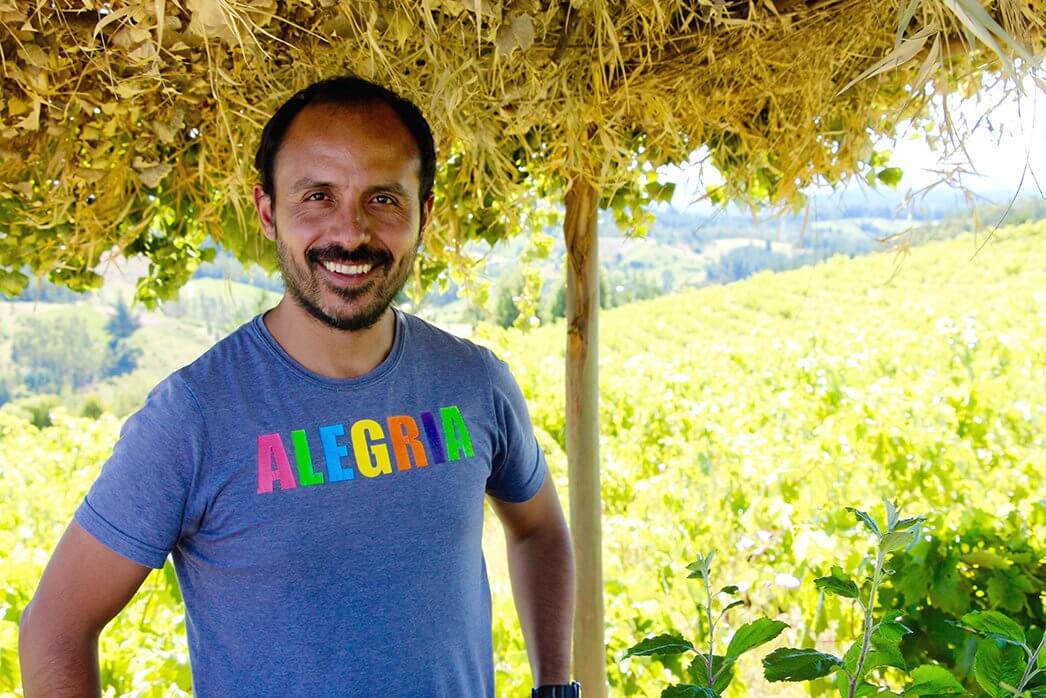
Two weeks ago, I spoke with Leo and he sounded positive but shaken. Over the years he and his wife, Zjos (a Belgian native), invested all their earnings from the Viñateros Bravos negociant program to build/buy their own vineyards and winery. The winery is safe and holds the 2022 vintages still in tank with some lots from previous years too, but the vineyards they bought (for the Leo Erazo range) were scorched in less than six hours. These losses not only include this year’s crop but every crop until three or four years after they replant. With no fire insurance (likely not even available in Chile due to the regularity of burns) puts them back at square one (or even further back) with mostly only negociant fruit to work with, which will also certainly be less available because many of his growing partners lost their vineyards too. These losses mean a reduction to about 50% of normal production each year (estate vineyards and negociant vineyard losses combined), not only for one year, but until he’s able to find more sources of fruit inside this now charred land.
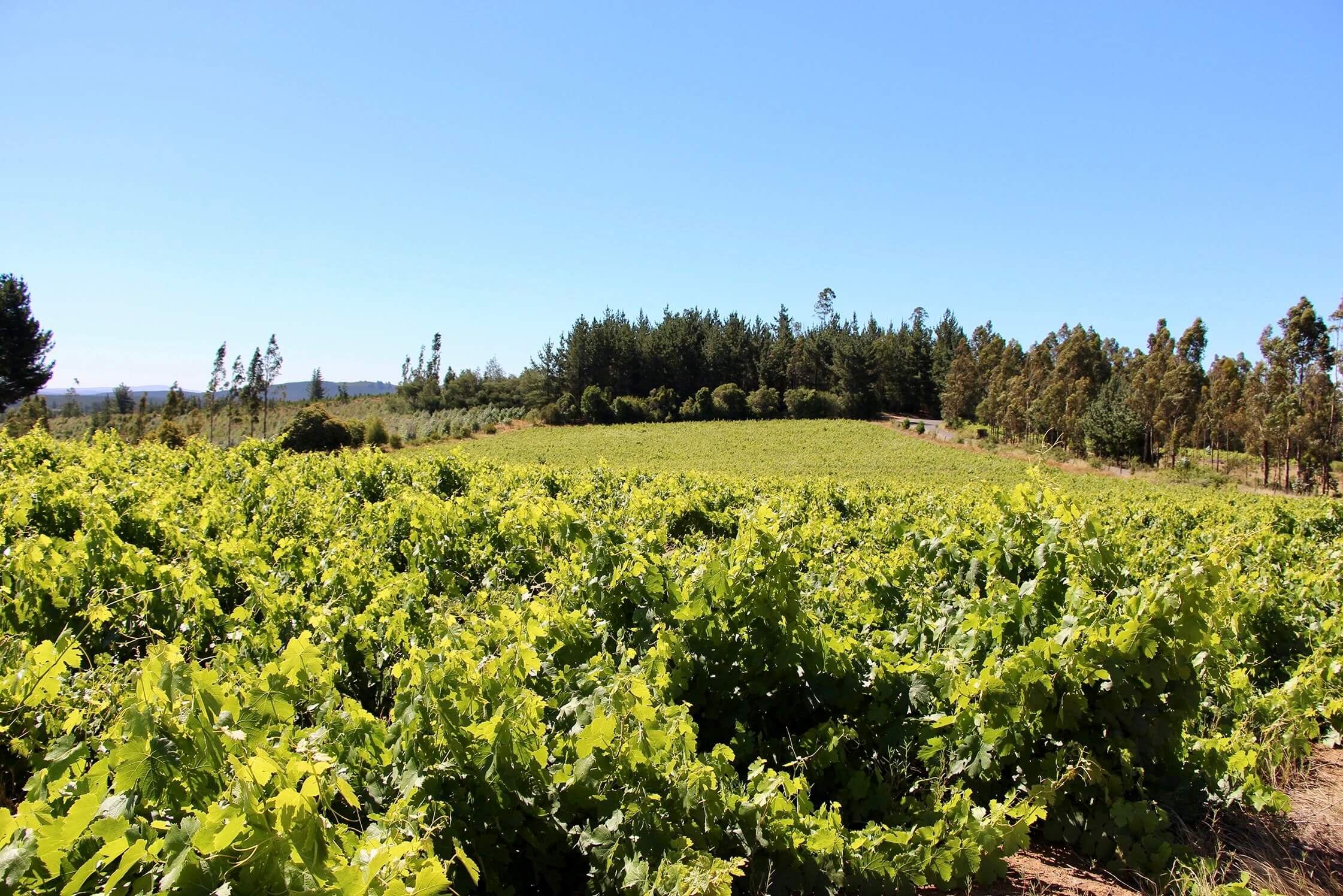
Lost were some of the most treasured vines in the world. The only beneficial losses were the eucalyptus trees, an invasive, alien, pesky, thirsty, greedy Australian tree that choked out most of Itata’s historic vines in the twentieth century. As many of you know, Itata is home to a treasure trove of the oldest vines in the world, with most País vines being over 150 years old, and over 80 for Cariñana. Some of the País are even believed to be over 300 years old. Most of the vines are own-rooted as well because Chile was never exposed to phylloxera, which makes Itata even more special—world heritage level; UNESCO level! To think about what wines we get from Leo and Zjos at the prices we get seems ridiculous: cold climate, own-rooted, 150-300-year-old vines on decomposed granite and volcanic soil. Simply absurd values for some of the New World’s most authentic terroir wines.
We know we cannot save the whole world by ourselves. But when opportunities arise to help those in front of us who’ve helped build our business and possibly been a part of yours (for those in the trade), it’s gratifying to contribute in some way to ease their stress, suffering, along with those around them—workers, friends, neighbors, people who lost their homes, too. What’s unique in the case of Leo Erazo compared to makers in other wine regions who’ve gone through devastation is that the margins on his wines are razor thin and he lost his vineyards, not just a season’s crop. They need to rebuild, but all of their money was tied into those vineyards and their future crops. Also, this part of Chile is poor—dirt poor, so a little money goes a long way. In other agriculture areas banks often leverage loans against land, but this is Chile, not the EU, or the US. Resources are few and the government’s power to help is limited because it has so little in reserve. Leo said the government will help those who lost their homes, but not their vineyards—an understandable priority. I know firsthand that Leo and Zjos are frugal and live very modestly. They’re free-spirits, happy to live in spare quarters with little, with only good friends and humble means. It’s for this that we know that the financial help they receive will go straight to rebuild necessities for their business.
Our resolution is simply to take a modest increase on their already underpriced wines and donate that increased revenue after the business costs, plus a dollar per bottle directly from The Source to Leo and Zjos. We bought a full container, so if we can do it, it will really be something they can work with. Though maybe this year the prices are a few bucks higher per bottle, the wines are worth that and more. It’s about the same percentage increase that most Côte d’Or growers take every year regardless of a bad season or good. The difference in a store will be about $19 to $22/$23 for the Viñateros Bravos line. Simply by purchasing these wines you will be directly supporting the rebuilding of their lives so they can continue their work preserving what they have left and making beautiful, inexpensive terroir-stacked Chilean wines. That’s the story, below are the wines. All are organically farmed, and the following explanation of their details is loosely taken from their writing.
The oldest wine ever produced in Chile back in 1551 was called Pipeño. Old vines and natural winemaking make these wines a great introduction to the old vines of Itata. Pipeño Blanco is made with 100% old-bush vine Moscatel planted in the 1960s, and the Pipeño Tinto is made with 100% old-bush vine Cinsault, planted almost a hundred years ago. Both Pipeños are unfiltered and intentionally hazy, which has been the tradition of Pipeño since the oldest memory of these wines. Pipeño is the greater regional “terroir series,” while Viñateros Bravos is the “soil series,” where the old vines have a greater interaction with each specific mother rock, highlighting their mineral characteristics and wineprint. The “cru series” is the result of ten years of soil mapping across the Itata hills, and these are the vineyards that got destroyed. In these wines the layers of complexity and depth, and the longer aging potential are more apparent. All the wines are vinified in concrete (eggs, spheres, and more), amphoras, large wood vats and food-grade polymer containers, and they’re pressed in a vertical, wooden press.
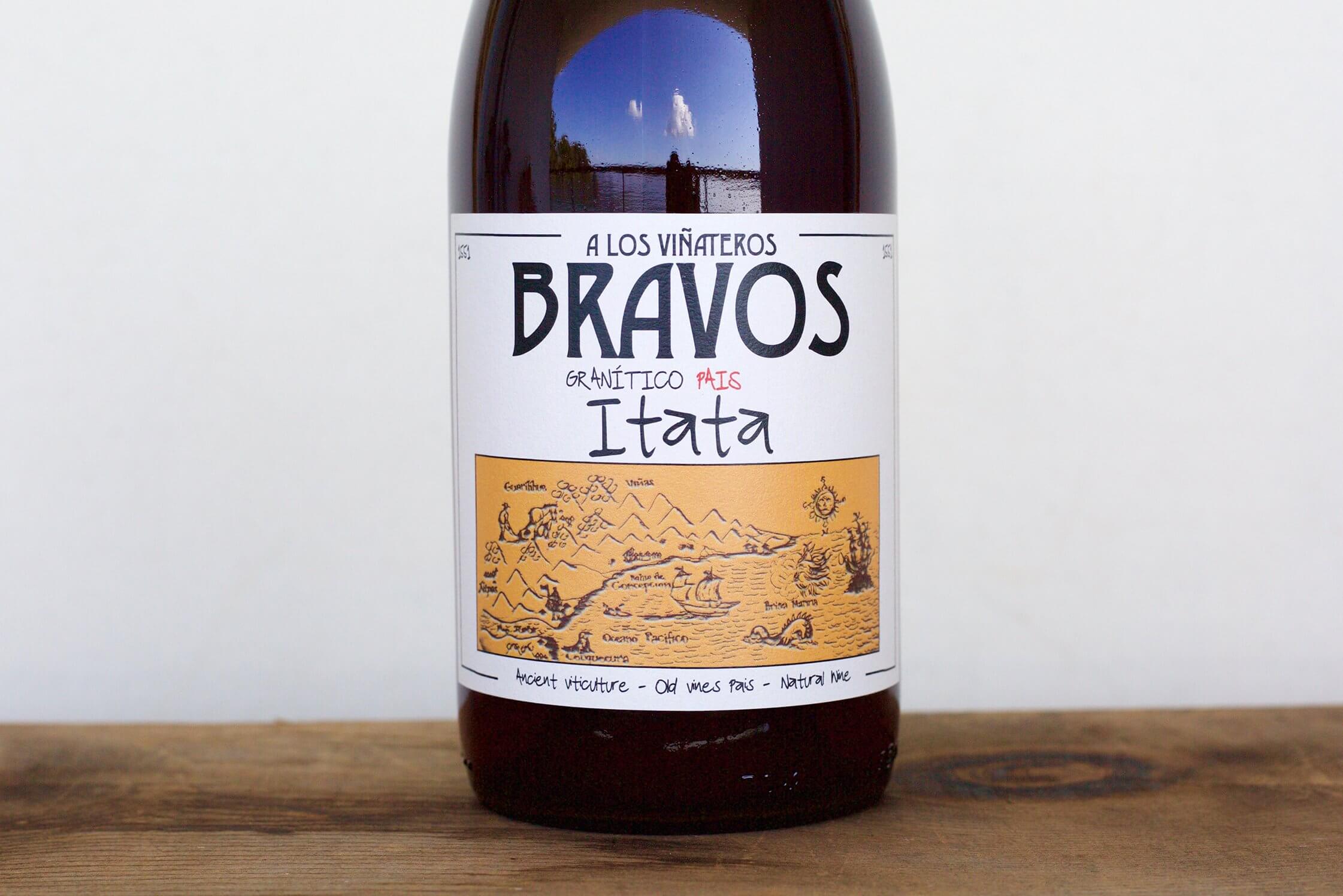
We thank you for your contribution to help, which is simply to buy and enjoy the Viñateros Bravos and Leo Erazo wines.
Arriving are:
2022 Pipeño Tinto (1L)
2022 Pipeño Blanco (1L)
2022 Viñateros Bravos, Itata, País Volcánico
2022 Viñateros Bravos, Granítico País
2022 Viñateros Bravos, Cinsault Granítico
2021 Leo Erazo, Parcela Unica Cinsault, El Tunel
2019 Leo Erazo, Parcela Unica Cinsault, Superior, Las Curvas
2019 Leo Erazo, Carigñan Parcela Unica Superior, Hombre en llamas
Etna Barrus
Etna, Italy
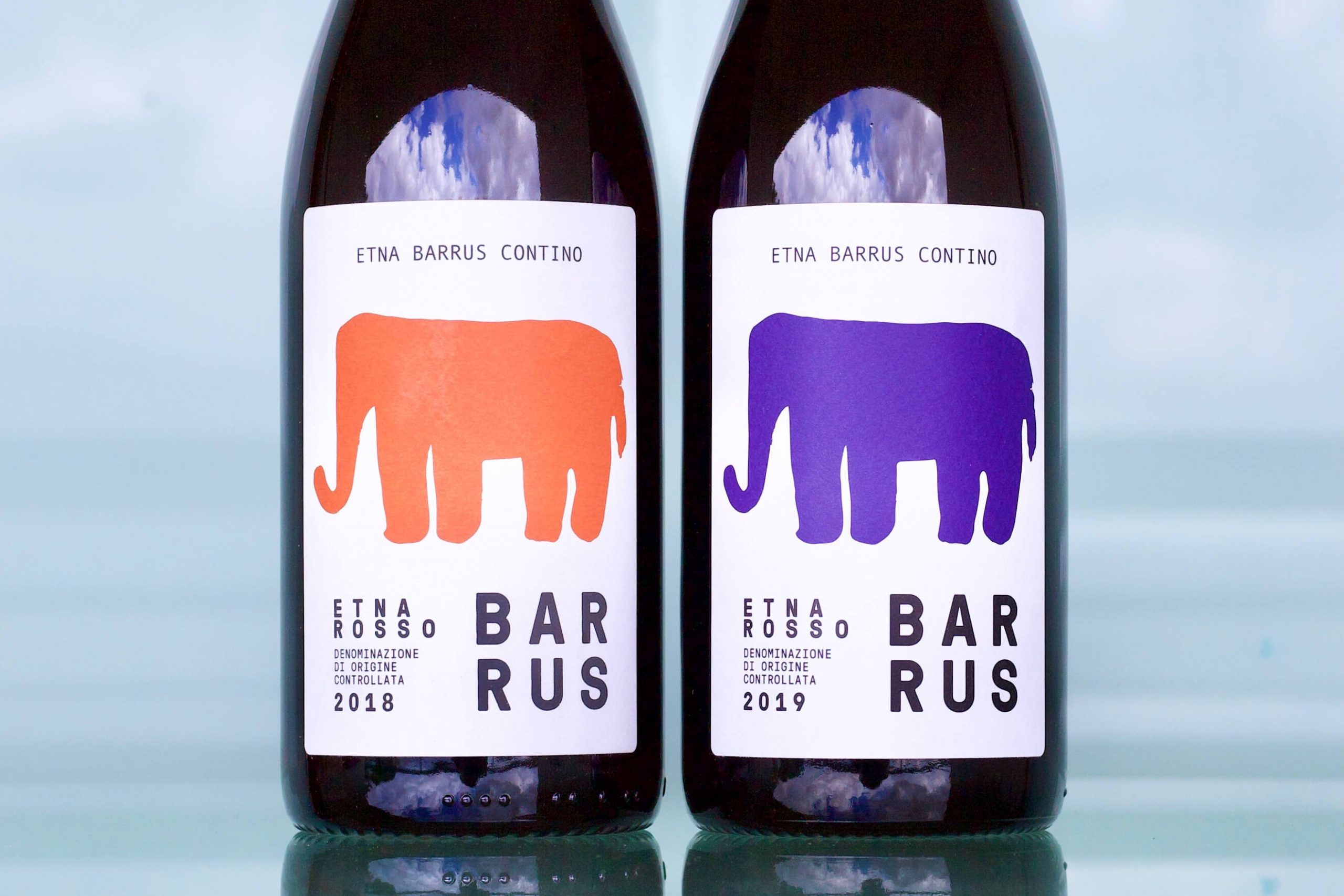
Located at an altitude of six-hundred meters, on panoramic terraces of Mount Etna’s southeast side within view of the Ionian Sea, exists the boyhood dreams of four men. Salvo, Toti, Mario, and Giuseppe were inspired by the passion and work of their grandparents when they formed Etna Barrus, a partnership that would begin their collective return to familial roots, where they would “devote themselves to viticulture without pollution; to do it the way they used to.”
Named after the elephant, the city symbol of Catania, combined with Italy’s most famous active volcano, the vineyards of Etna Barrus were planted in 2005 below one of Etna’s extinct cones, Monte Gorna. Their 2.7 hectares of vines are committed to a red grape responsible for some of the world’s most beguiling wines, Nerello Mascalese, and its burly and more colorful sibling, Nerello Cappuccio; Carricante was also planted in 2021. Their vineyard is composed of massale selections of each variety and they describe their agriculture as regenerative—they’re moving into organic certification in 2023. However, “to do it the way they used to,” implies that even before their bid for organic certification there’ve been no non-organic inputs in their vineyards. And because of the arid conditions in Sicily, with the exposure to the morning sun on the volcano’s southeast face, few treatments are needed in this natural climate that has been favorable to viticulture for millenia.
Their miniscule production churns out two raw though finely nuanced Etna Rosso wines and an Etna Rosato, all a blend of 90% Nerello Mascalese and 10% Nerello Cappuccio, and all on volcanic sand naturally rich in organic substances and life-giving minerals—hallmarks of these nature-friendly soils. The vine density is 5000 vines per hectare trained on Cordone Speronato and Alberello (goblet). The full capacity each season should produce only around 7,500 bottles.
The red grapes are usually harvested around the first ten days of October. Once in the cellar, they are destemmed and macerated no more than a week to preserve the fresher fruit nuances and allow the fine tannins from the grape skins rather than the seeds that further break down as the alcohol rises, extracting harsher tannins. The wine is then racked into steel along with the press wine and then finishes fermentation over another two weeks.
The wine for the purple label remains in steel for a year, and the orange label, the “selezione,” also finishes its fermentation in steel but is then racked into old French oak barrels (225l-500l) for a period of 12 to 18 months, dictated by the season’s conditions. The differences in taste between the Purple Barrus and Orange Barrus Etna Rosso wines are fitting colors that match the wine personalities. Purple Barrus is grown in a more reductive environment (steel) and tends toward a darker color with more exotic purple fruits than red, and has a stronger purple floral element with wild berry fruit. It’s also very mineral in the palate in a refreshingly cool sensation while at the same time being explosive, vigorous and exciting. The orange label Etna Rosso is stronger in red and orange fruits, due to the slow, oxidative maturation in old wood barrels. The floral elements are relatable to the sun-dried rose, similar to Nebbiolo, and expresses the southern Italian sweet orange peel/Aperol aroma. This wine is also more discreet and finely tuned than the upfront purple Barrus.
Douro, Portugal
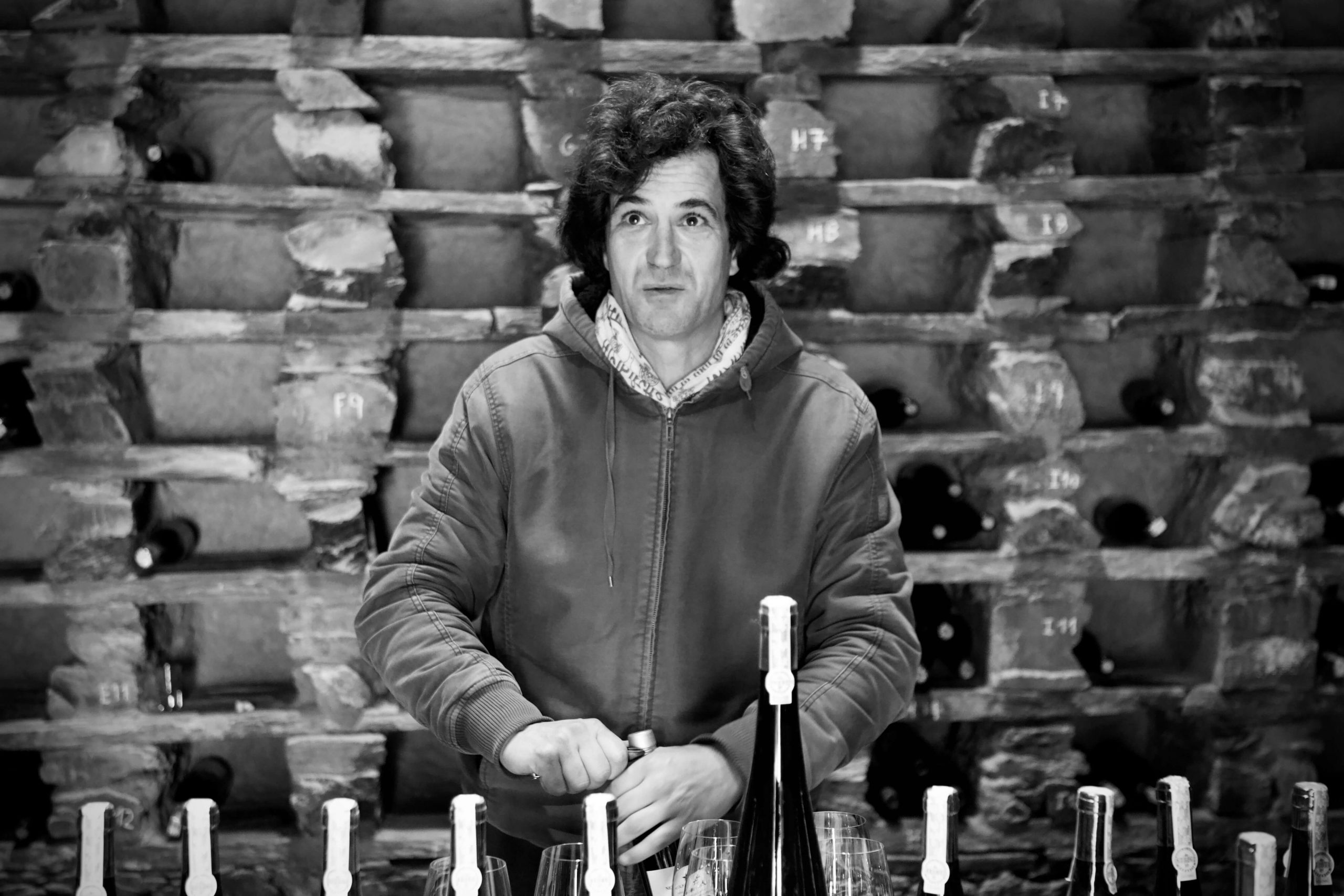
“When I was eighteen, the only thing that I wanted was to see the world. I had no special thoughts about winemaking, but wine runs in the blood.” -Mateus Nicolau de Almeida
Renaissance (Cave) Man and the Saint
The Douro wines of Mateus Nicolau de Almeida in Vila Nova de Foz Côa are crafted underground in a schist cave, an environment in near complete opposition to the work experiences and family histories of its makers, Mateus and Teresa, as both come from extremely scientific and technical backgrounds. Their stated objective is, “To be transparent, and to transmit the elementary concepts of Douro, even if you are drinking them on Venice Beach!”
Organically farmed and certified, their wines are defined through a combination of vineyards in the different sub-regiões (subregions) of Douro and a multitude of indigenous grape varieties. The Trans Douro Express are three “climate” reds from roughly ten different vineyards that demonstrate the three sub-regiões of Douro: in the west, the coldest and wettest, Baixo Corgo; in the middle Cima Corgo, and in the east to the border of Spain, the driest and warmest, Douro Superior. Each of these wines illustrate their differences in climate, which of course, determines grapes suitable for each area, which are not the same. Eremitas are three white wines from the Douro Superior and express three different schist-based terroirs. Made in particular years, the Curral Teles, their “human wines,” are their most experimental, tinkered with in the cellar (including one wine aged inside a granite block!) to discover new gateways to different expressions and nuances—very Portuguese, at least from a two-thousand-year view into the past with this country of historic exploration and discovery. There are also two stellar (but in very low supply), traditionally crafted Port wines, Lágrima (white Port) and Ruby Seco. There are more specific details of each wine toward the bottom of the profile.
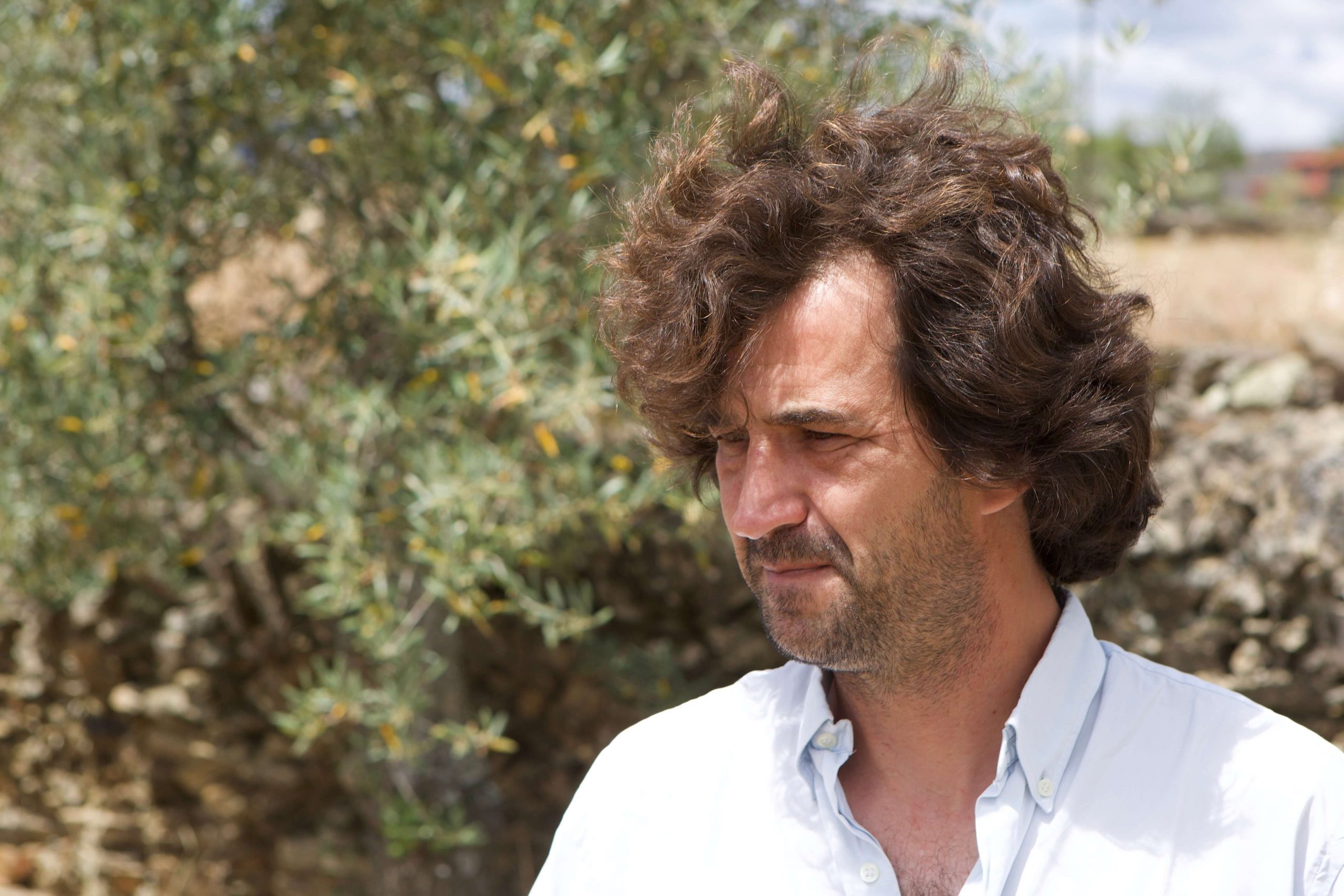
The Saint (Teresa) and the Caveman, a guy with a crown of thick, windblown, Van Gogh-esque brushed locks, are fabulous cooks and irrepressibly hospitable. They raise their own crops and animals, and a small building on their property is dedicated to the making of their character-filled and full-flavored vinegars. They also produce distillates with juniper and make olive oil; their projects are a constant, including those with artist Pedro Jervell (the producer of their granite rock tank), as well as with wine transporters who use old sailboats. They do music events, wine events (Mateus helped to conceptualize Simplesmente Vinho in Porto, the most important event for small and environmentally conscious winegrowers), parties (legendary by reputation), and began to work with archeologists from the Côa Valley after Teresa found important paleolithic rock engravings. Mateus even has his own tiny wine importing company focused on European producers with their same agricultural ideals in organic, biodynamic, and natural wine concepts. What else? They’re also fluent in Spanish, French, Portuguese, and English! With all this time spent doing so many things, when they’re asked who does what in the winery, they respond, “We’re still trying to figure that out…”
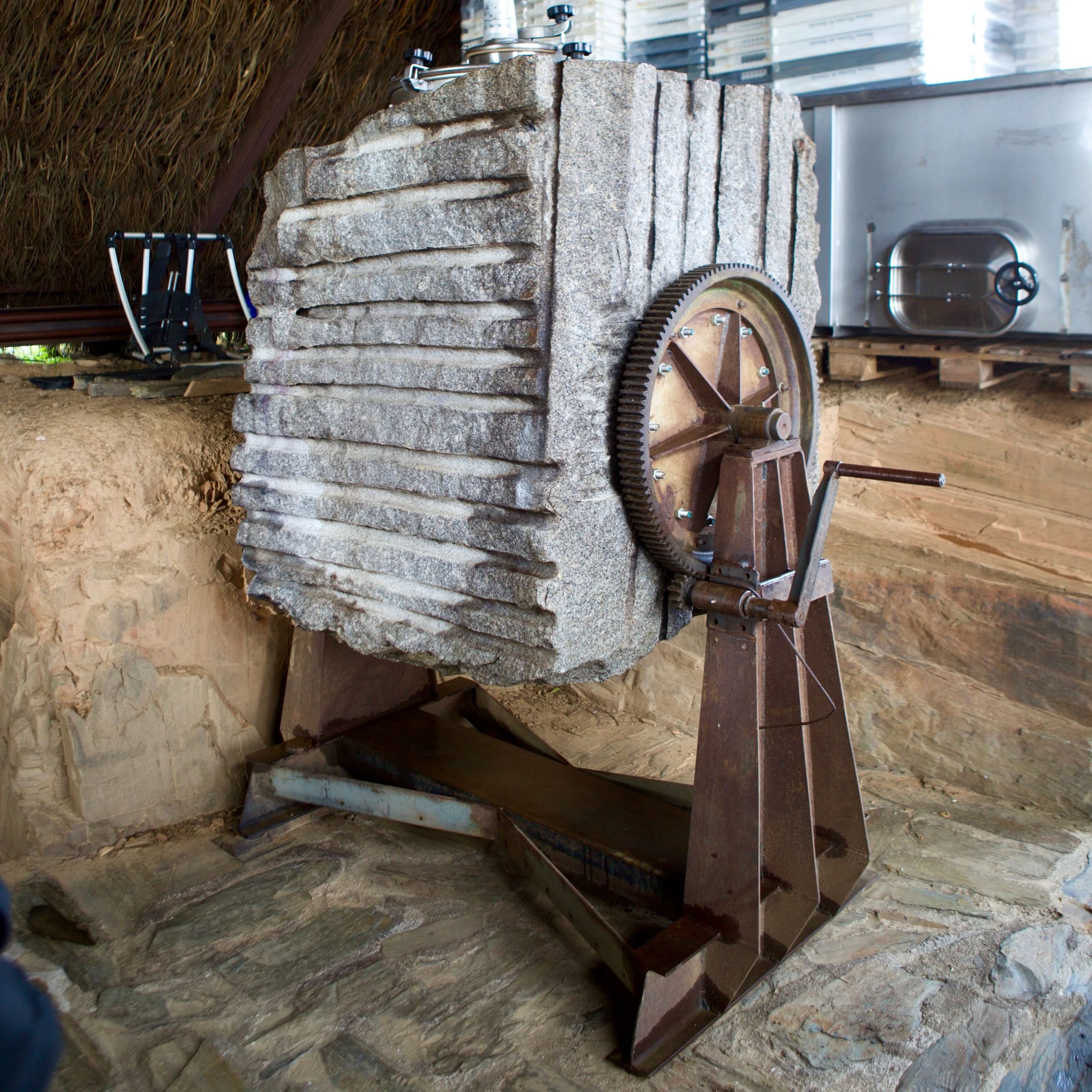
Bloodlines
Mateus Nicolau de Almeida made and bottled his first wine in 1988, at only ten years old. He’s the son of one of Portugal’s most celebrated winegrowers, João Nicolau de Almeida, and the grandson of Fernando Nicolau de Almeida, the founder of Portugal’s most mythical and immortal (and most expensive) wine in 1952, Casa Ferreirinha Barca Velha. By blood, they’re all connected to the legendary Ramos Pinto port house started in 1880 by the then twenty-one-year-old artist, Adriano Ramos Pinto, known today for its historic port wines, but even more for their iconic, art deco label illustrated in 1925 by French artist, René Vincent. Coming to understand Mateus’ family heritage of wine, art, and creative and progressive minds, makes it easier to imagine what his first wine crafted at such a young age would have been like.
Mateus’s curiosity for the world and wine led him to experiences in California, Argentina, Chile, and Spain, but most of them abroad were in France, including seasons at Caves de Saint Mont, Château Grillet, and numerous châteaux (Reynon, Doysy Daëne, Clos Floridène) co-managed by University of Bordeaux enology professor, the late Denis Dubourdieu, whose influence on Mateus was enormous. But his most important interaction in Bordeaux was in 1996 at a Third Growth Margaux estate, Château Cantenac Brown, where he met Teresa Ameztoy, who would become his partner in life, the mother to his children, and the holder of the string that keeps the kite that is Mateus from flying away. Mateus’ wine experiences also include involvement in their familial project, Quinta do Monte Xisto, and in 2003, he created the winery, Muxagat, then left it to his partners in 2014 to develop his own project.
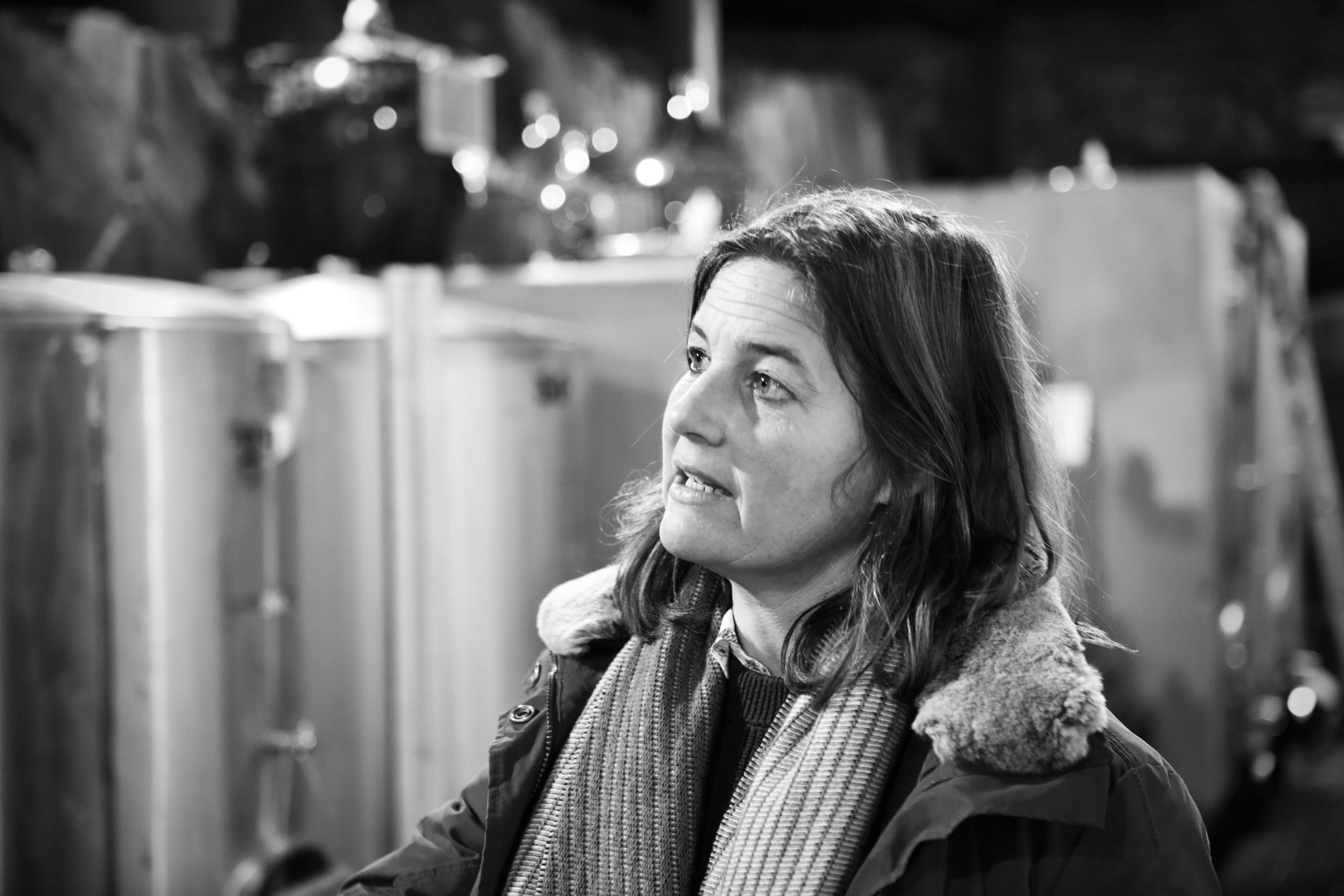
A San Sebastián native raised in Rioja, Teresa’s father worked for the famous bodega, La Rioja Alta S.A. and Murua. In 2019, she left her position as the head winemaker for Ramos Pinto (2005-2019) to fully focus her energies with Mateus on their wine project, labeled Mateus Nicolau de Almeida, starting in 2015. Prior to Ramos Pinto, Teresa’s vinous exploits include eight years as a winemaker in Xerez, seasonal stints in Italy, Uruguay, Chile, Argentina, South Africa, Domaine de Trevallon, and the famous biodynamic Alsace estate, Josmeyer. She also earned a BTS Vitio-oeno at Montpelier and Diplome National d’oenologie at Bordeaux University. Teresa cites her early great influences as the late Eloi Dürbach (Trevallon), Telmo Rodriguez, João Nicolau de Almeida, and her father, but, she says, “Now Mateus is my biggest influencer.”
Golden?
If one took all the extremes of Germany’s Mosel Valley, France’s Northern Rhône, Austria’s Wachau, and Spain’s Ribeira Sacra and stirred them together you would have Portugal’s Douro River Valley. The extremity of the series of river valleys that stream into the Douro and the bridges towering above them is truly breathtaking, unlike anything else in the wine world. With vineyard altitudes that go from about 80 meters to around 800m very quickly, with land that seems strapped down by vine rows so they don’t fall over into the rivers far below, it’s a glorious view for the non-squeamish car passenger. It’s also an intense, stressful, and envy-filled drive for the one behind the wheel who must keep their eyes on the winding roads at all times.
Douro’s vinous history dates to the Romans, who of course, came for metals, mostly gold. Douro means golden in Portuguese, but Teresa pointed out that linguistics theorists believe the name for the Douro River comes from the pre-Roman sound, DWR, which means running water—similar to other river names, like Dordogne, Adour. Centuries later, the Moors instituted a near-complete Muslim prohibition on alcohol from sometime during the 8th Century until around the late 11th Century. The Reconquista resulted in Christians regaining territory in what was then called Galicia-Leon. The new rulers coincided with the arrival of Cistercian monks who planted new vineyards in 1142 in the Douro at today’s Casa dos Varais, across the Douro from Peso da Régua, less than five kilometers by air (15 minutes by car) from Lamego to the south. These monks were also responsible for Galician wine development just to the north, as well as in Burgundy and many other European wine regions.
Port wine production appeared toward the second half of the 17th Century to stabilize wines through fortification for export, principally with British and Flemish patrons, who at that time were at war with France. Most of the Port wines were produced from vineyards in today’s Baixo Corgo and Cima Corgo, and Douro Superior was exploited for production in the early 1900s. With the arrival of Port wine, the most historic wine of Douro, still wine, became almost non-existent. However, as already mentioned, Casa Ferreirinha’s Barca Velha was developed by Mateus’ grandfather in 1952, and João, Mateus’ father, developed the “Duas Quintas” still wines in the early 1990s for Ramos Pinto. In the late 1990s, the Port house, Niepoort, under the direction of Dirk Niepoort, took a strong position with a series of new and inspiring still wines. In 1986 Portugal joined the EU (then referred to as European Communities), and subsidies began to finance new ventures along with the crazy bridges and a world-class highway system that made it easier to cross into Portugal’s nether regions, which coincided with an explosion of Douro’s still wine production.
Douro Sub-Regiões
Douro’s sub-regiões are better understood through climate, with, generally speaking, Douro Superior (east) with Mediterranean (or Continental) dominance, Cima Corgo (middle) with Mediterranean and some Atlantic influence, and Baixo Corgo (west) with Atlantic and less Mediterranean influence. Teresa and Mateus explain, “the three sub-regiões are well delimited, but their differences are still very unknown to general consumers. Apart from that, it would be very important to acknowledge that inside these three sub-regiões of Douro there are other sub-sub-regiões with different climates and different soils.” This would be an enormous task to formalize, and if the history of politics in wine appellations is any indicator of what would likely transpire, it would be a very long time before any consensus was made among growers.
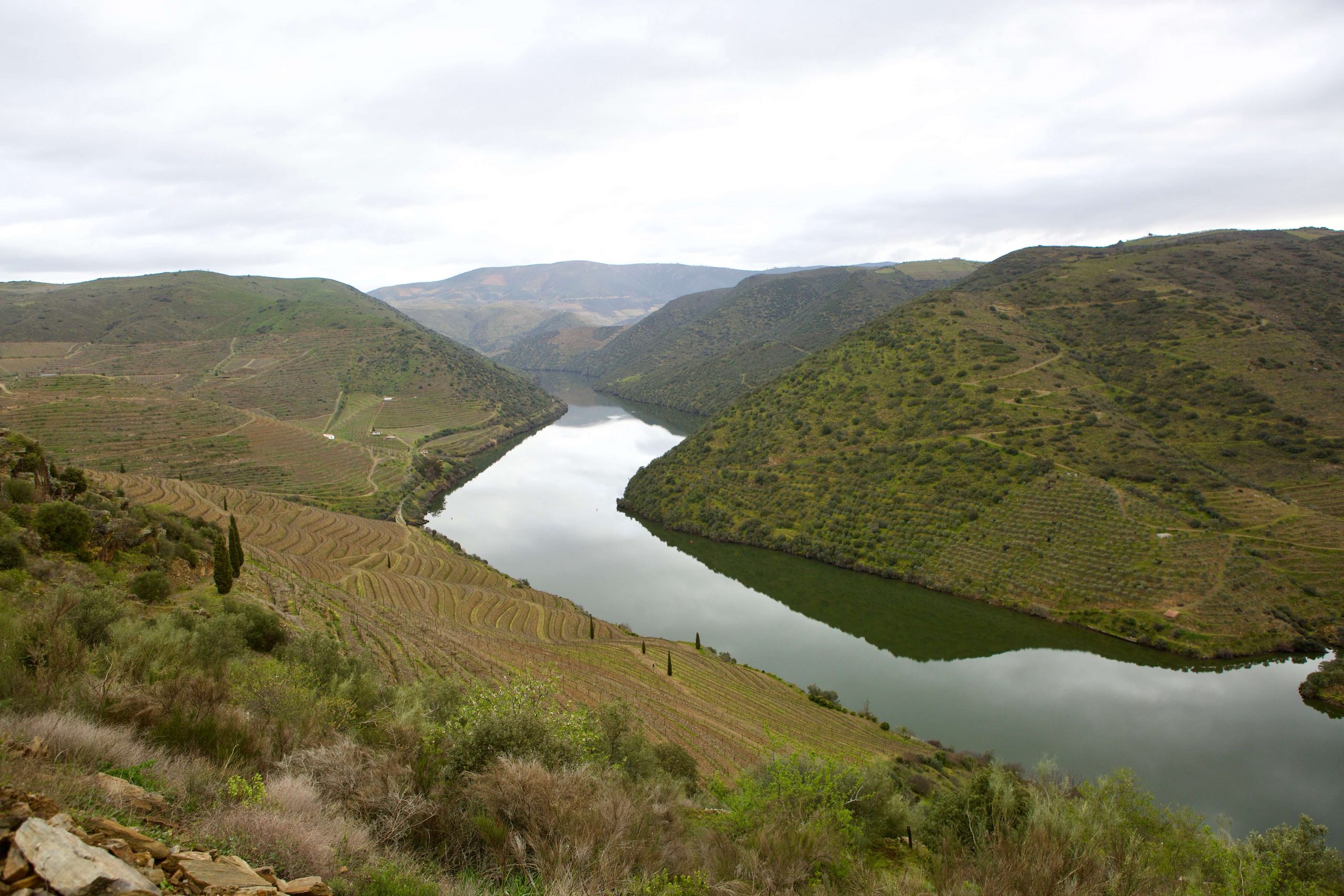
Temperature is very influential inside the sub-regiões. Butted up to the border of Portugal’s Vinho Verde appellation, Baixo Corgo (BC) has the mildest temperatures and the most rainfall—nearing 1000mm per year. Cima Corgo (CC) is much warmer and with an average between the two on precipitation of around 600mm per year, and Douro Superior (DS), separated on its far eastern flank from Spain by the Douro (Duero in Spanish) and Agueda Rivers (a tributary to Douro originating further south that acts as the Portuguese and Spanish border for over 100km), is the hottest and has around a mere 350mm. Mildew pressure and disease are highest in Baixo Corgo and decrease the further east through Cima Corgo and then Douro Superior, which correlates directly with the amount of vineyard treatments each season. BC has more trees, but the highest degree of biodiversity is in DS.
Climate change is influential in Douro but Mateus and Teresa believe it’s less so than other wine regions. Douro has always been extreme, and they think that it is not so much different than in the 1950s, and they have familial historical references to back this up. The difference is that the extremes of summer highs are higher, but they think the overall temperatures are similar. The most affected region is likely Baixo Corgo (the cooler area), which has warmed the most. However, the burgeoning still-wine business has different needs than those of Port wine production. In general, along the river gorges, Port wine grapes originate on the hot, south-facing slopes, while much of the still wine production is facing north and/or at higher altitudes.
Though it’s dependent on each season, normally the bud break starts in Baixo Corgo, then Cima Corgo, and finally Douro Superior. DS is last because the temperatures until February and March are colder, and the spring and fall are the shortest seasons by way of temperature; DS has a lot of winter and summer. Harvest usually begins in DS, then CC, and finally BC. This, in theoretical support of length of season connected to wine complexity, should mean that on some level, Baixo Corgo may have a greater potential of phenolic complexity than the other sub-regiões, in general. However, much of the general population would go for DS and CC because of their richer profiles by comparison. Mateus believes that still wines from BC should be the longest lived, followed by DS, and then CC.
Topographically, Baixo Corgo and Douro Superior are more gentle slopes when compared to the more extremes of Cima Corgo. They all have the commonality of various versions of schist, with the youngest rock formations starting in BC leading to the oldest in DS. Interestingly, the many granite terroirs of Douro are not allowed into Port production.
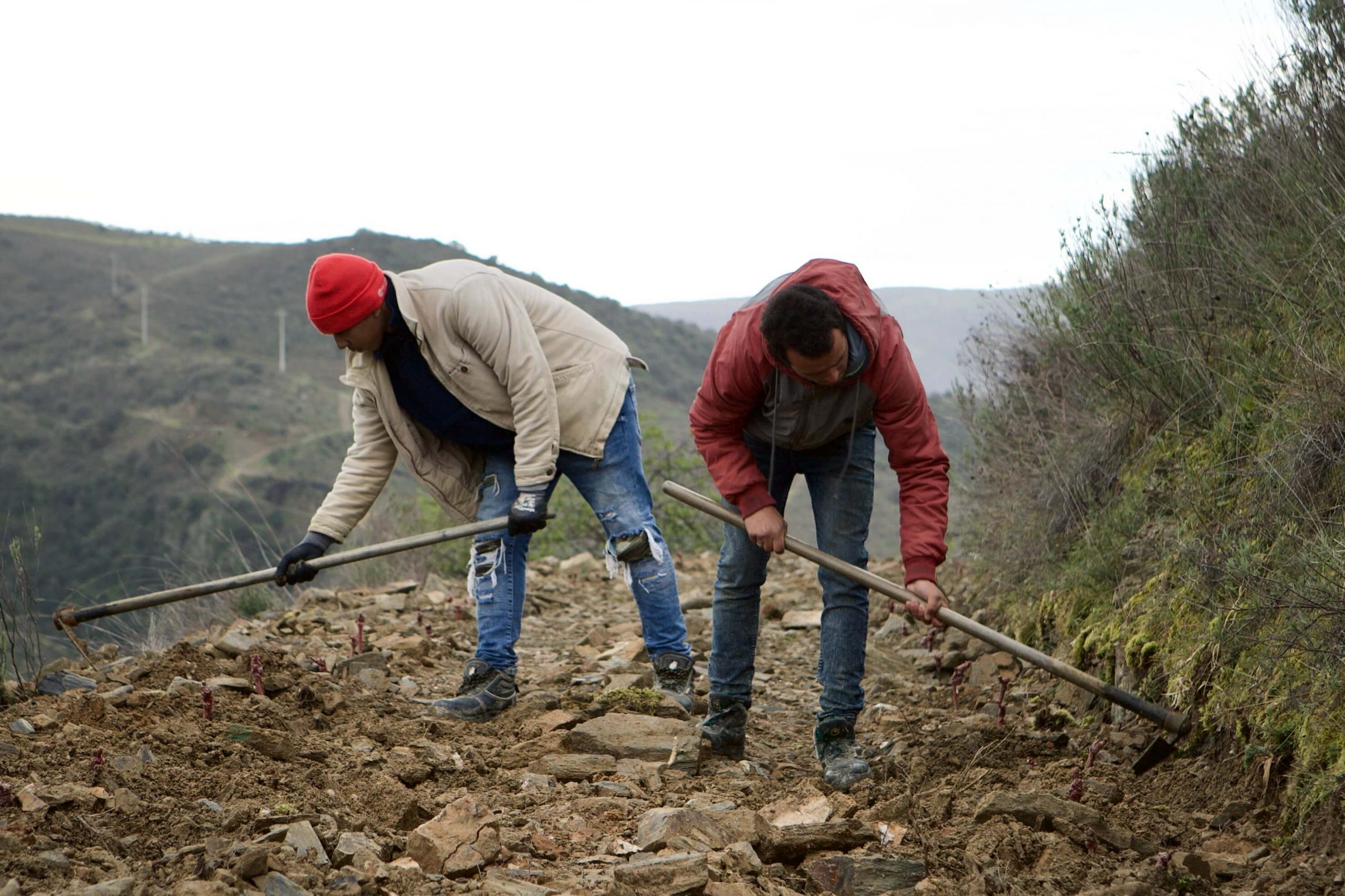
Vineyard Practices and Grapes
The philosophical approach in the vineyards to respect nature and encourage biodiversity in and around the vineyards. They believe biodiversity is key, not only to wine expression but overall health of their lands. One visit to their properties demonstrates their commitment to these ideals. Regarding tillage, some are done by tractor, some by horse, and others not at all. The timing of picking is done with a combination of taste and chemistry balance, and all of the wines are grape co-fermentations.
They have many vineyard sites within each of the sub-regiões, and each has more favorability toward specific varieties. Though the five most planted in the area are the red, Touriga Nacional, Touriga Francesa, Tinta Barroca, Tinta Cão, and Tinta Roriz, there are over 100 different indigenous varieties in the region. Other notable reds are Tinta Amarela, Malvasia Preta and Tinta Carvalha, which are more present in BC and CC. Whites are fewer, with BC planted more to Malvasia Fina and DS more Rabigato and Codega (Siria). In CC there are fewer white grapes planted than the other sub-regiões. Most of the grapes used for their project are from vineyards they own (4ha in total, all certified organic), and some are from rented vineyards while others are from purchased grapes.
Please refer to our Douro Terroir Map on our website for more extensive grape details and terroir overview.
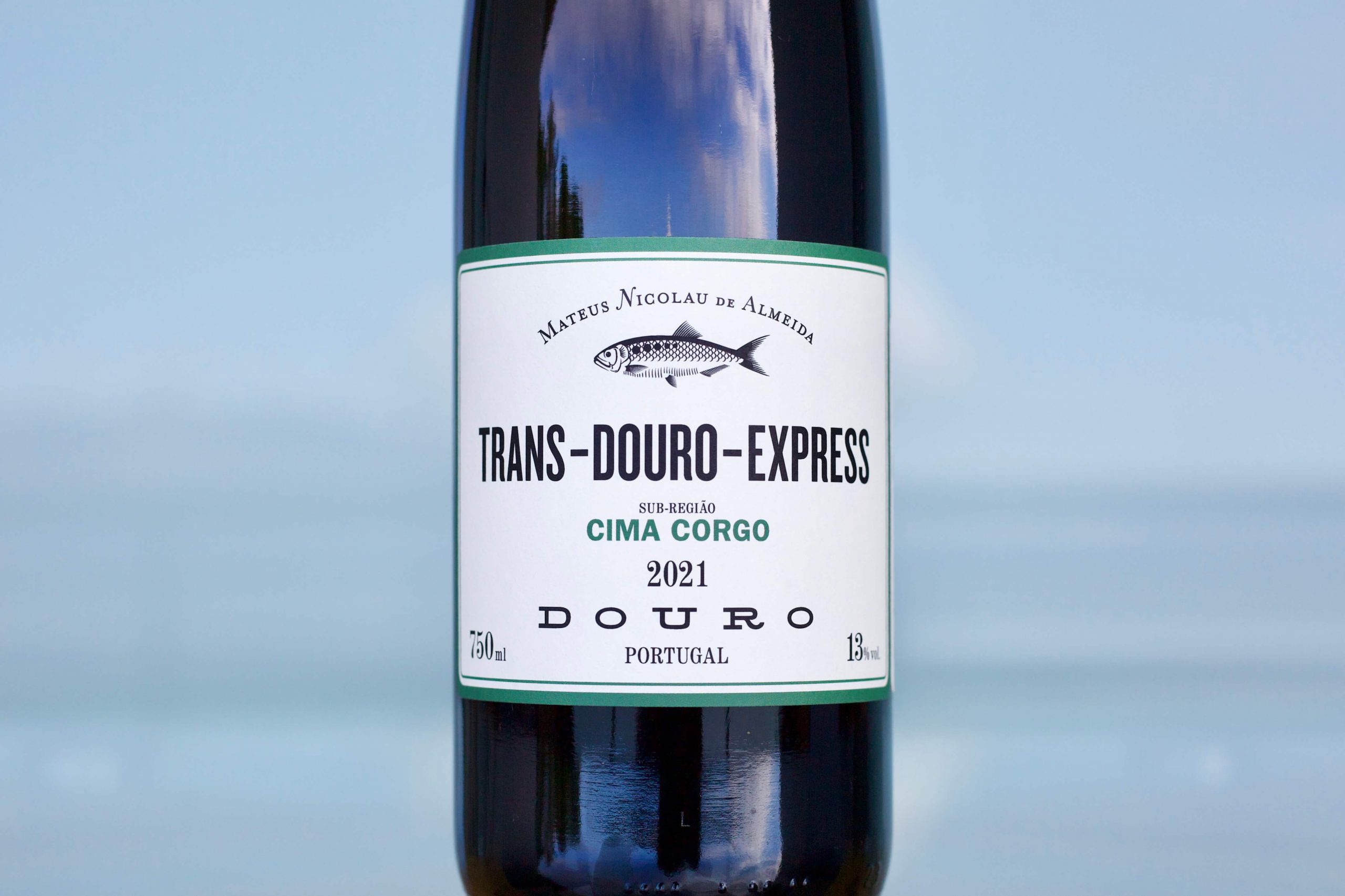
Wines
The fish on the label—a unique wine logo—is representative of the Allis Shad (known as Alosa Alosa, in Latin, and Sável in Portuguese), part of the herring family. This fish was once able to work its way back into the Douro and beyond until the closure of the river by the fifteen dams that now stop the free flow.
As mentioned, the Trans-Douro-Express are “climate” wines, and are labeled based on the sub-regiões, Baixo Corgo, Cima Corgo, and Douro Superior. They all come from vineyards of schist bedrock and variations of topsoil composition, mostly loam (clay and sand mixture) topsoil and are very poor with low water retention. The wines are a blend of more than ten varieties and crafted with the same basic processes in the cellar: all destemmed and spontaneously co-fermented in 4000L concrete vats. Extractions are gently done one time per day (maximum) with pumpovers, or pigeage by feet and hands for four to five days prior to pressing. They’re aged in the same concrete vats for eight months, racked a few times during aging, lightly filtered, and sometimes fined. Total sulfite levels range between 40-50 ppm(mg/L) with the first addition usually made prior to fermentation.
Between the three wines the climate and precipitation are evident. Of course, vintages will vary, but early experiences with young wines are that Baixo Corgo leads with a tight frame, iodine-heavy mineral nuances (particularly in the 2021), and rock and wild berry purple fruit quality. Cima Corgo similarly has iodine impressions present in the nose but also some level of reduction/mineral and rockiness in impression. The fruit components are also berry heavy, but those with the sense of cultivated and wild-picked. Douro Superior expresses more burnt earth mineral nuances, like hot iron. It’s not as tight as the others upon opening and expresses more savory fruits and food, with the 2021 showing chestnut, persimmon, red apple skin. Its earthiness seems more dirt than rock.
Curral Teles Tinto “Alpha” is done with whole-cluster foot-stomping inside an open-top, shallow granite calcatorium (lagar) for three hours and then slowly pressed in a vertical press. The juice is fermented and aged in 4000L concrete vats for eight months.
Eremitas Branco “Amon de Kelia” comes from gray schist with quartz at 500m altitude and is made exclusively of Rabigato, an intense white with very good levels of acidity. Whole clusters are foot-stomped inside an open-top, shallow granite calcatorium (lagar) for three hours and then slowly pressed in a vertical press. The juice is fermented for seven or eight days followed by aging in 4000L concrete vats for eight months. The wine does not go through malolactic fermentation, therefore the wine is filtered prior to bottling and sometimes fined.


